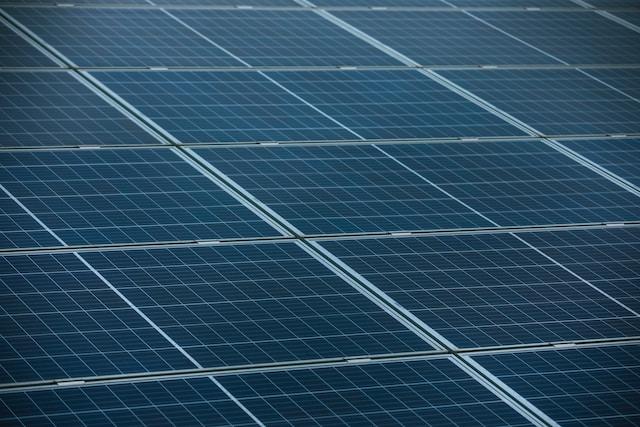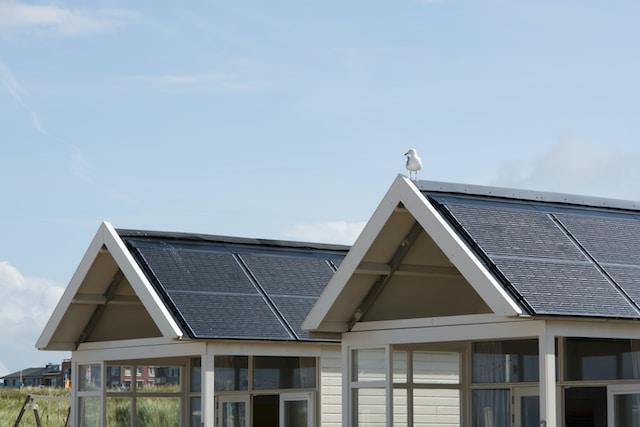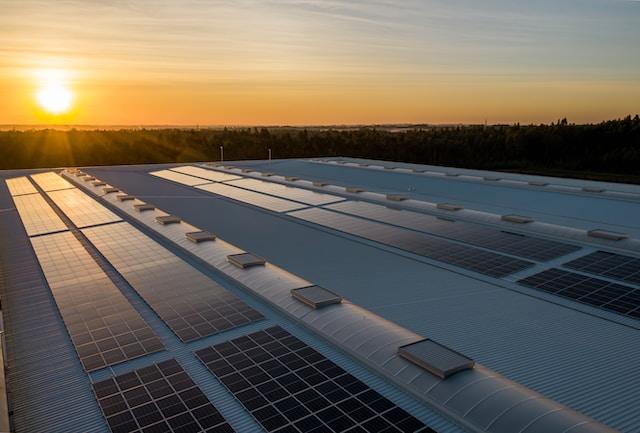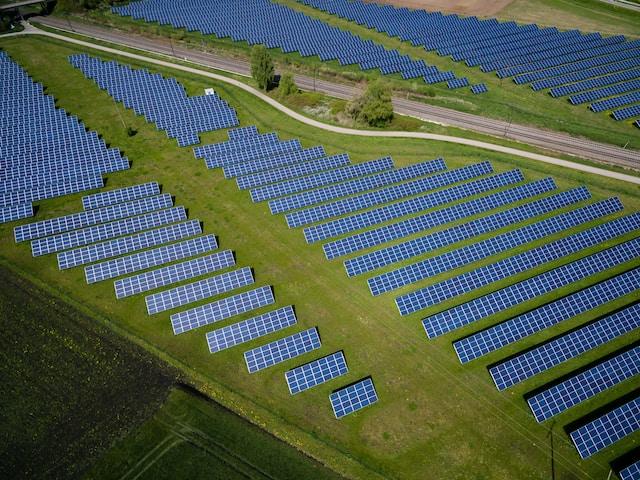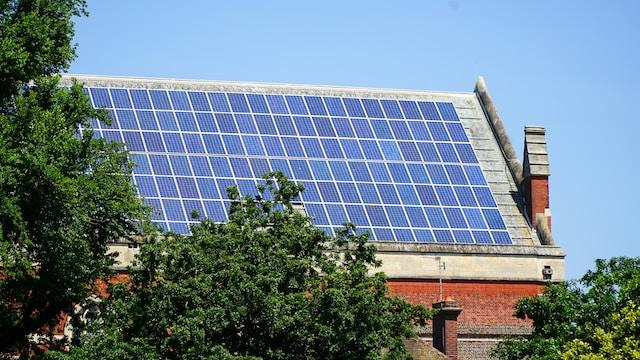
The Ultimate Guide to Solar Panels: Everything You Need to Know Before Purchasing
Introduction
Discover the power of solar energy, a renewable, eco-friendly, and cost-effective solution for today's energy needs. As the world shifts towards sustainable living, harnessing the sun's energy has become increasingly popular. Solar panels offer numerous benefits such as reducing carbon footprint, lowering energy bills, and even increasing property value. Before investing in this cutting-edge technology, it's crucial to conduct thorough research to ensure you make an informed decision that suits your unique requirements. Our comprehensive guide covers everything you need to know about solar panels – from understanding different types and components to calculating system size and comparing costs. We'll also provide valuable insights into selecting the right manufacturer and installer, preparing your home for installation, and maintaining your solar power system for optimal performance. Embark on this journey towards a greener future with confidence, armed with all the essential knowledge about solar energy.
Types of Solar Panels
When considering solar panels, understanding the different types available is crucial for making an informed decision. The three main types of solar panels on the market are monocrystalline, polycrystalline, and thin-film, each with their own unique advantages and drawbacks. Monocrystalline solar panels are made from a single, pure silicon crystal, which gives them their characteristic dark, uniform appearance. These panels are known for their high efficiency, as they typically have a conversion rate of 15-20%. Monocrystalline panels are also more space-efficient, meaning you'll require fewer panels to generate the same amount of energy as other types. However, they can be more expensive than their counterparts. Polycrystalline solar panels, on the other hand, consist of multiple silicon crystals fused together. This manufacturing process results in a slightly lower efficiency rate of 13-17%, but at a reduced cost compared to monocrystalline panels. They have a blue, speckled appearance due to the various crystal fragments. While not as efficient or aesthetically pleasing as monocrystalline panels, they are still a popular and cost-effective option. Thin-film solar panels represent the latest in solar technology. These panels are made by depositing thin layers of photovoltaic material onto a substrate. While thin-film panels are the most affordable option, their efficiency rates are considerably lower, ranging from 10-12%. They are lightweight, flexible, and have a sleek appearance, making them ideal for applications where aesthetics and weight are critical factors. In conclusion, when comparing the types of solar panels, it's essential to consider factors such as efficiency, cost, and aesthetics. Monocrystalline panels offer the highest efficiency but come at a higher price, while polycrystalline panels provide a balance between efficiency and cost. Thin-film panels are an affordable, visually appealing option, but their lower efficiency might require more surface area to generate the desired amount of energy. Evaluating your specific needs and priorities will help you determine the best type of solar panel for your project.
Components of a Solar Power System
A solar power system comprises several essential components that work together to convert sunlight into usable electricity for your home or business. By understanding these components, you'll have a better grasp of how solar energy systems function and the factors to consider when planning your installation. Solar panels are the most visible part of a solar power system. They consist of photovoltaic (PV) cells that capture sunlight and convert it into direct current (DC) electricity. The number and type of solar panels required depend on your energy consumption, roof space, and budget. Inverters play a crucial role in converting the DC electricity generated by solar panels into alternating current (AC) electricity, which powers most household appliances and can be fed back into the grid. There are two main types of inverters: central (or string) inverters, which connect multiple panels in a series, and microinverters, which attach to each panel individually. Microinverters offer better efficiency and monitoring capabilities but are generally more expensive. Mounting systems securely attach solar panels to your roof or other structures, such as ground mounts or pole mounts. They are typically made of aluminum or stainless steel to ensure durability and resistance to corrosion. The choice of mounting system will depend on factors like roof material, slope, and local weather conditions. Professional installers can help you select the most suitable mounting solution. Batteries and energy storage systems allow you to store excess solar energy produced during the day for use when the sun isn't shining, like at night or during periods of low sunlight. Solar batteries come in various capacities, technologies, and price points, with lithium-ion batteries being the most common type. Integrating energy storage can increase system cost but adds flexibility and energy independence. Understanding these critical components will help you make well-informed decisions when planning your solar power system, ensuring a seamless and efficient energy generation process.
Sizing Your Solar Panel System
Sizing your solar panel system correctly is essential for maximizing the benefits of solar energy and ensuring that the system meets your specific energy needs. By taking into account factors like energy consumption, solar panel output, and roof space requirements, you can design a tailored solar solution that's both efficient and cost-effective. Calculating your energy consumption is the first step in determining the size of your solar panel system. Begin by examining your utility bills for the past year to find your average monthly electricity usage in kilowatt-hours (kWh). For a more accurate assessment, consider seasonal variations in energy consumption, such as increased usage in summer due to air conditioning. Next, evaluate the solar panel output by researching the efficiency and power ratings of various panel types. Higher-efficiency panels generate more energy per square foot, requiring fewer panels to meet your energy needs. However, they may also be more expensive. Your location and the amount of sunlight it receives will also affect the output of your solar panels. Roof space requirements must be taken into account when sizing your solar panel system. Ensure that your roof has enough unshaded space to accommodate the number of panels needed to generate your desired amount of electricity. Additionally, consider factors like roof orientation, pitch, and structural integrity to determine if any modifications are necessary before installation. Finally, tailor the system size to your specific needs, balancing factors such as energy consumption, budget, and available roof space. Smaller systems may be more affordable upfront but may not fully offset your electricity usage. Conversely, larger systems can generate surplus energy, which may be sold back to the grid through net metering programs, potentially reducing your energy bills further. By carefully sizing your solar panel system, you can create a customized solar solution that meets your energy needs, budget, and space constraints, setting you on the path to a more sustainable and energy-independent future.
Solar Panel Costs and Incentives
Understanding the costs and incentives associated with solar panels is essential when considering a switch to renewable energy. Factors such as initial investment, installation costs, maintenance, and available incentives play a significant role in determining the overall affordability and long-term return on investment of your solar power system. The initial investment for a solar panel system includes the cost of solar panels, inverters, mounting systems, and installation labor. These costs can vary widely depending on factors such as system size, location, and chosen equipment. While solar panels have become more affordable over the years, it's important to factor in the installation costs as well to get a clear picture of your upfront expenses. Maintenance and repair expenses are relatively low for solar power systems, as they have no moving parts and are designed to last 25 years or more. However, occasional cleaning, inverter replacement, and other minor repairs should be factored into the overall cost of ownership. Governments and utilities often provide various incentives, rebates, and tax credits to encourage the adoption of solar energy. These incentives can significantly reduce the initial cost of your solar power system, making it more accessible and financially viable. It's crucial to research and apply for all eligible incentives in your area to maximize your savings. Evaluating the return on investment (ROI) and payback period is a critical step in determining the long-term financial benefits of your solar panel system. The payback period, which is the time it takes for the system to pay for itself through energy savings, will vary depending on factors such as system size, energy consumption, and local electricity rates. A well-designed solar panel system can provide substantial long-term savings on your energy bills while reducing your carbon footprint and increasing property value. By considering costs, incentives, and potential returns, you can make an informed decision about investing in solar energy and enjoy the financial and environmental benefits it has to offer.
Choosing the Right Solar Panel Manufacturer and Installer
Selecting the right solar panel manufacturer and installer is crucial to ensure the quality, performance, and longevity of your solar power system. By carefully evaluating the reputation, warranties, and certifications of manufacturers and installers, you can confidently choose the best partners for your solar energy journey. Assessing the reputation and credibility of solar panel manufacturers involves researching their track record, years in business, and customer reviews. A well-established manufacturer with positive reviews and a history of reliable products is more likely to provide high-quality solar panels that deliver consistent performance. Don't hesitate to ask for references or consult online forums for real-world insights from other solar system owners. Comparing warranties and customer service offerings is another important step in selecting a solar panel manufacturer. Comprehensive warranties typically cover 25 years for solar panels and 10-15 years for inverters, providing peace of mind in case of product defects or performance issues. A manufacturer with responsive customer service and a strong support network will ensure that any concerns or problems are addressed promptly and effectively. Selecting a qualified and certified installer is essential for the safe and efficient installation of your solar power system. Look for installers with proper certifications, such as the North American Board of Certified Energy Practitioners (NABCEP) certification in the United States. This ensures that they have the necessary training and expertise to adhere to industry best practices and safety standards. Additionally, check their experience and reviews to gauge their quality of work and customer satisfaction. Evaluating installation quotes and proposals from multiple installers will help you find the best value for your investment. Be sure to compare factors such as equipment quality, total costs, and warranty coverage alongside the installation price to make an informed decision. By carefully choosing the right solar panel manufacturer and installer, you can ensure a smooth installation process and a high-performing solar power system that meets your energy needs for years to come.
Preparing Your Home for Solar Panel Installation
Preparing your home for solar panel installation is a critical step to ensure a smooth and successful transition to renewable energy. By addressing factors such as roof inspection and repair, tree trimming, and obtaining necessary permits, you can lay the groundwork for an efficient and hassle-free installation process. Roof inspection and repair are crucial before installing solar panels. A professional roof inspection will assess the structural integrity, weight-bearing capacity, and overall condition of your roof, determining whether it is suitable for solar panel installation. If needed, complete any repairs or upgrades before moving forward with the installation. This not only ensures the safety and longevity of your solar power system but also helps avoid costly repairs or modifications after the panels have been installed. Tree trimming and shading considerations play an essential role in maximizing the efficiency of your solar panels. Solar panels require direct sunlight to generate electricity effectively, and shading from trees or other structures can significantly impact their performance. Before installation, evaluate the shading on your roof and consider trimming or removing any trees or obstacles that may cast shadows on the panels. Additionally, keep in mind that seasonal changes, such as leaf growth and sun angle variations, can affect shading throughout the year. Obtaining necessary permits and approvals is a vital part of preparing for solar panel installation. The permitting process varies by location and may require approval from local authorities, homeowners' associations, or utility companies. Your solar installer can usually help guide you through this process and ensure that your system complies with all relevant regulations and requirements. By proactively addressing these essential preparations, you can set the stage for a seamless solar panel installation and enjoy the benefits of renewable energy with minimal disruption to your daily life.
Monitoring and Maintaining Your Solar Panel System
Monitoring and maintaining your solar panel system is essential to ensure its long-term performance, efficiency, and durability. By regularly tracking system performance, performing cleaning and maintenance tasks, and addressing potential issues, you can maximize your solar power system's benefits and safeguard your investment. Monitoring system performance allows you to track your solar panels' energy production and identify any deviations from expected output levels. Many solar power systems come with built-in monitoring software or apps, enabling you to access real-time data on energy production and consumption. By keeping an eye on your system's performance, you can quickly detect and resolve any issues that may arise, ensuring optimal efficiency and energy generation. Regular cleaning and maintenance play a crucial role in preserving the effectiveness of your solar panels. Dust, dirt, and debris can accumulate on the panel surfaces, potentially reducing their efficiency and energy output. To maintain peak performance, it's essential to clean your solar panels periodically, either by doing it yourself or hiring a professional cleaning service. Additionally, check for any signs of physical damage or wear, such as cracks or loose connections, and address these issues promptly to prevent further complications. Troubleshooting and addressing potential issues in your solar panel system is an integral part of ongoing maintenance. Some common problems include inverter malfunctions, wiring issues, and shading from nearby trees or structures. By being proactive in detecting and resolving these challenges, you can minimize downtime and ensure your solar power system continues to operate at its full potential. In summary, a consistent approach to monitoring and maintaining your solar panel system is key to maximizing its benefits and protecting your investment. With proper care and attention, your solar power system will continue to deliver clean, renewable energy to your home or business for years to come.
Conclusion
In conclusion, this comprehensive guide has provided valuable insights into the world of solar energy, covering topics such as solar panel types, system components, sizing, costs, incentives, and maintenance. Emphasizing the importance of proper research and planning, we've highlighted the need for selecting the right manufacturer, installer, and system size tailored to your specific needs. By considering these factors and taking the first step towards a more sustainable future, you can enjoy the numerous benefits that solar energy has to offer. Invest in solar panels today, reduce your carbon footprint, and contribute to a cleaner, greener world for future generations.
Apr 3, 2023
Share:
Fresh off the Press
Continue reading
Newsletter
Your journey towards a sustainable lifestyle starts here!
Join our newsletter for the latest on solar panels and clean energy breakthroughs.

